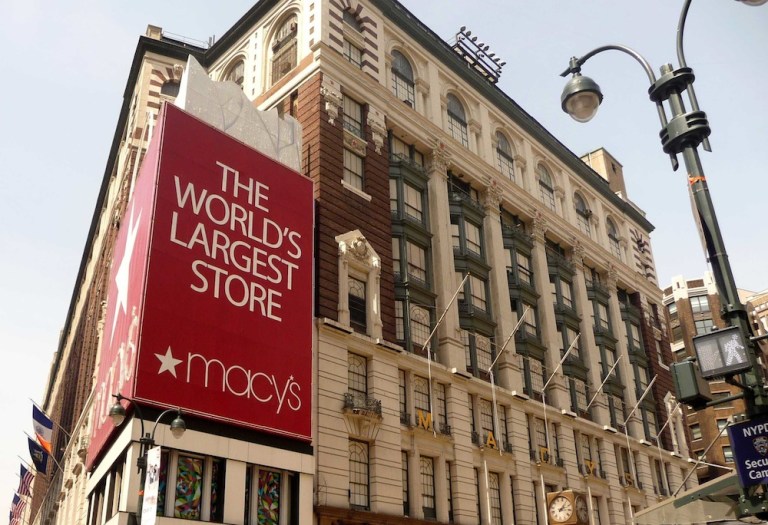
After posting quarterly earnings figures in May so abysmal that they took the rest of department store retail down with them, Macy’s finally got a bit of good news into 2016 with their Q2 earnings reported yesterday.
The struggling department store managed to blow away analyst estimates on both their top and bottom line and there were some signs that Macy’s aggressive discounting was having the desired effect of drawing shoppers back into the store. That good news, however, is tempered by the continued reality of falling sales and coming closure of an additional 100 stores as Macy’s moves to strategically focus on their better performing locations.
“Whenever there’s been a setback in our company, we’ve been first in the industry to take a very aggressive stance at moving us forward,” CEO Terry Lundgren told CNBC’s “Squawk Box.” “That’s just part of it. By closing 100 stores … we’re getting out in front of this.”
By the numbers, Macy’s reported earnings of 54 cents per share on revenue of $5.87 billion, a far cry from the 45 cents on $5.75 billion in revenue that was the consensus estimate from Thomson Reuters. That is a decline from a year ago, when Macy’s was reporting 64 cents on $6.10 billion in revenue, but is still an improvement from Q1. Guidance on share performance for the year remained the same at $3.15 to $3.40.
Same-store sales were also down, though by less than the 4.4 percent that was forecasted pre-release. All in, comparable sales were down 2 percent, aided by the closure of 41 underperforming locations.
“A number of factors worked in our favor in the second quarter, including a normalized weather pattern, which contributed to a sales lift in our apparel business in particular,” Lundgren said. “We also saw a smaller decrease in tourist spending during prime summer travel months, supported by strengthened promotional events designed to increase customer traffic and conversion.”
Lundgren also pointed to increased customer liquidity and confidence as evidenced by growth in auto sales and home improvement, meaning the buyers can buy, if they are shown something they want to buy.
“This is good news,” he told CNBC. “They don’t need another car. They don’t need to fix their home anymore … So it’s my turn. It’s our turn.”
The 100 stores marked for closure will be mostly shuttered in early 2017, while the leftovers will likely close as their leases wind down. The exact list has yet to be released. According to Macy’s President Jeff Gennette, who will assume the CEO role from Lundgren in 2017, all of the closing locations are cash flow positive, but have been showing markedly declining volume over the last several years.
The saving from those closures will be refocused on “highest-potential locations,” and investing “more aggressively in digital and mobile,” Gennette noted.
Employees impacted by the store closings may be offered positions in nearby stores. Eligible employees who are laid off will be offered severance benefits.
Macy’s is also continuing to pull funds from its store fleet. That includes the sale of its Union Square men’s store in San Francisco for redevelopment.
As of today, there are 728 Macy’s locations, 675 of which are traditional full price shops. About 90 have closed so far during the last six years, with 13 new ones opened, as well as 6 Macy’s Backstage stores.